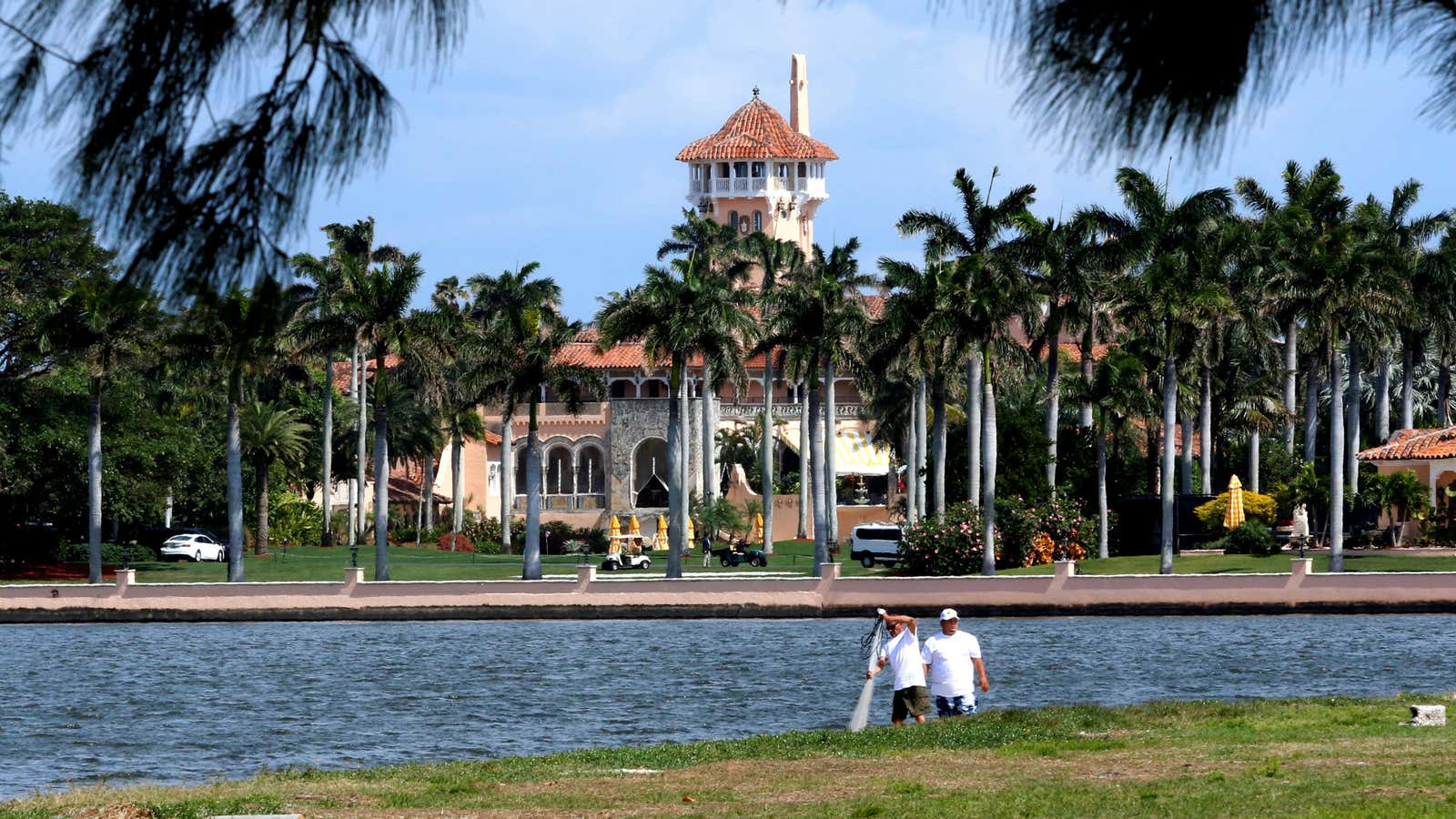On the chopping block in US president Donald Trump’s proposed budget is the Sea Grant program, a 51-year-old project of the US National Oceanic and Atmospheric Administration (NOAA) that supports research affecting coastal communities.
One area benefitting from the $73 million program is one Trump is very familiar with: Palm Beach County, Florida, home to Mar-a-Lago,the Trump property and frequent presidential retreat. Sea Grants have helped Palm Beach and adjacent counties come up with a regional climate strategy and reinforce storm defenses, ProPublica has reported.
Over the past decade or so, regular tidal flooding has increased in Palm Beach and other coastal communities in the southeastern US. If sea levels continue to rise as scientists say they will as long as global warming continues at its current pace, many of the glittering properties on the island could be underwater. Including Mar-a-Lago.
In just 30 years most of the resort could be under at least a foot of water for two-thirds of the year, according to a risk analysis the Guardian commissioned last year. By 2100, according to NOAA prediction models, most of the property would be underwater year-round.
Trump’s views on climate change have varied widely since 2009, though his “default position,” according to a top aide, “is that most of it is a bunch of bunk.” That’s not a widely shared view in the world of coastal real estate. In an anonymous 2016 survey of 100 high-end realtors in Miami, a coastal city 75 miles south of Palm Beach, two-thirds said they were concerned about the effect of sea level rise on the local market. But here Trump may have more in common with the occupants of luxury properties than those who deal in them: only 22% of buyers shared their worries.
